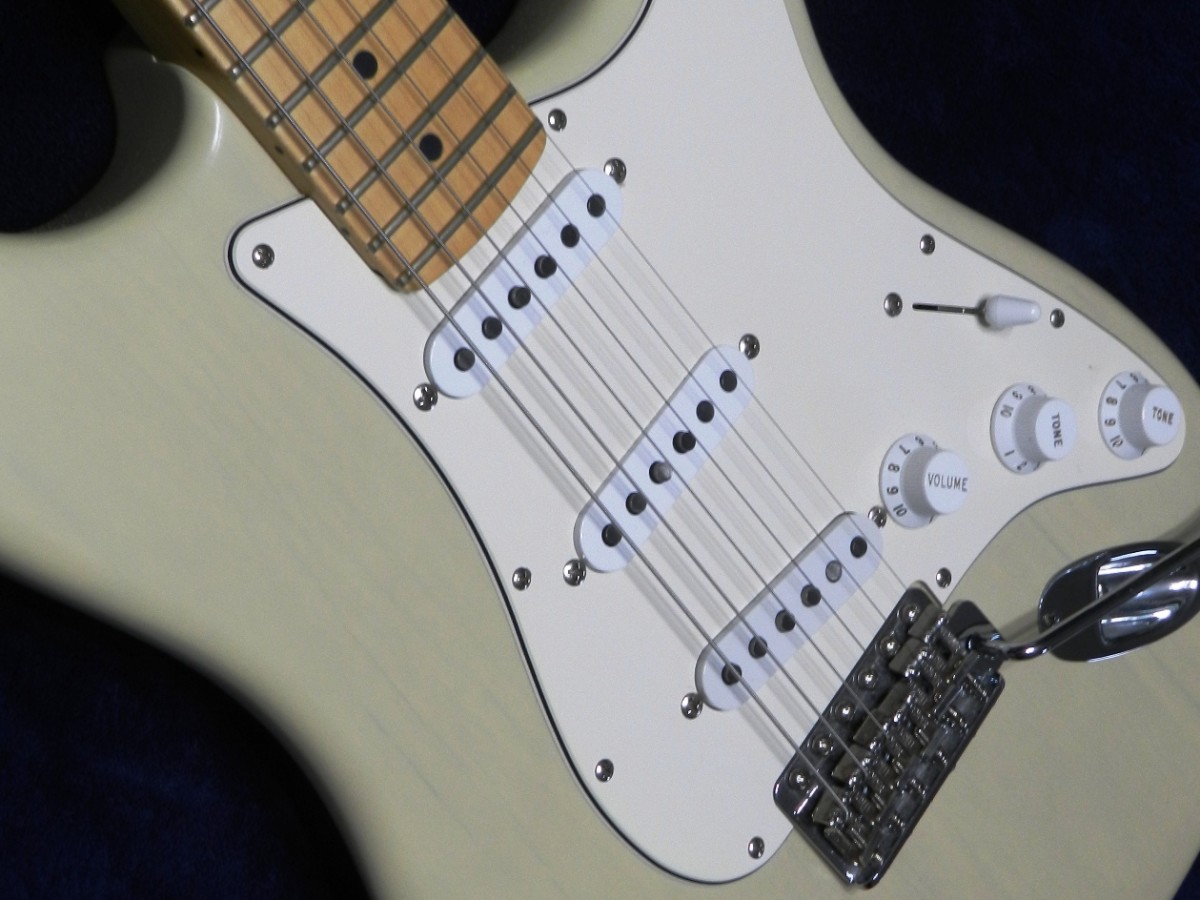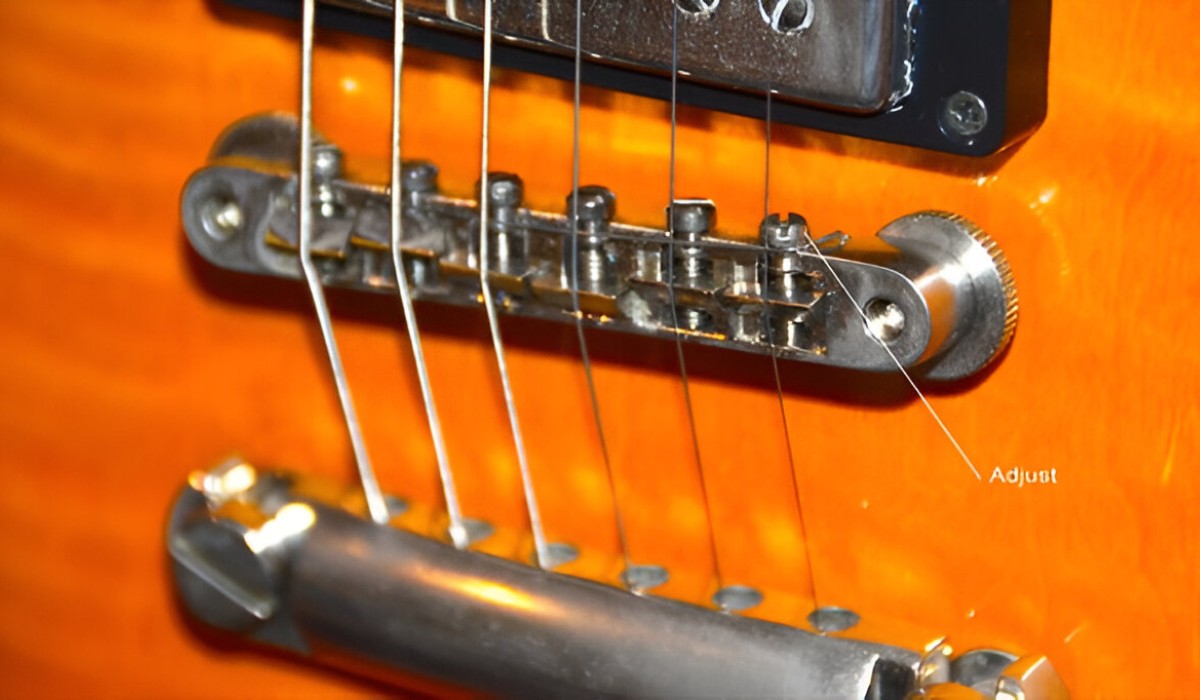Introduction
Tuning an electric guitar is a fundamental skill that every guitarist should master. Whether you're a beginner or an experienced musician, keeping your guitar in tune is crucial for producing the best sound possible. A well-tuned guitar ensures that your chords ring out clearly and your solos sound pitch-perfect. In this guide, we'll explore the essential steps to tuning an electric guitar, covering everything from understanding the guitar's anatomy to using a tuner effectively.
Tuning a guitar may seem daunting at first, but with the right knowledge and techniques, it becomes a straightforward and rewarding process. By following the steps outlined in this guide, you'll be able to keep your electric guitar in tune, allowing you to unleash its full potential and enjoy a satisfying playing experience.
Understanding the basic components of the guitar, selecting the appropriate tuning method, and using a tuner to achieve precision are all crucial aspects of this process. As we delve into each step, you'll gain valuable insights that will empower you to tune your electric guitar with confidence.
Whether you're preparing for a performance, a recording session, or simply honing your skills at home, having a well-tuned electric guitar is the foundation for creating beautiful music. So, let's embark on this journey to master the art of tuning an electric guitar and unlock the full sonic capabilities of this iconic instrument.
Step 1: Understand the Guitar’s Anatomy
Before diving into the tuning process, it’s essential to familiarize yourself with the basic anatomy of an electric guitar. Understanding the various components and their functions will not only facilitate the tuning process but also deepen your overall appreciation for the instrument.
First and foremost, the headstock of the guitar houses the tuning pegs, which are used to adjust the tension of the strings. Each tuning peg corresponds to a specific string, and turning the pegs clockwise or counterclockwise alters the pitch of the strings.
Moving along the neck, you’ll encounter the frets, which are the metal strips embedded along the fretboard. Pressing the strings against different frets enables you to produce different notes and chords. The nut, located at the top of the fretboard, supports the strings and maintains their spacing, contributing to the guitar’s overall intonation.
Further down the neck, the pickups capture the vibrations of the strings and convert them into electrical signals, which are then amplified and projected as sound. The bridge, positioned at the lower end of the guitar body, anchors the strings and adjusts their length to fine-tune their pitch.
By comprehending the functions of these components, you’ll gain a holistic understanding of how the guitar operates, empowering you to approach the tuning process with confidence and precision. As we progress to the next steps, this foundational knowledge will prove invaluable in achieving optimal tuning results.
Step 2: Choose the Right Tuning Method
When it comes to tuning an electric guitar, selecting the appropriate tuning method is crucial, as it directly impacts the instrument’s sound and playability. Different styles of music and playing preferences often call for specific tunings, each offering unique tonal characteristics and chord voicings.
Standard tuning, known as EADGBE, is the most common tuning for electric guitars. In this configuration, the six strings are tuned to E, A, D, G, B, and E, respectively, from the lowest-pitched string to the highest. Standard tuning provides a versatile foundation for playing a wide range of musical genres and is often the starting point for beginners.
However, certain musical styles, such as blues, rock, or metal, may benefit from alternate tunings that offer distinct sonic possibilities. Drop D tuning, for example, involves lowering the low E string to a D, effectively creating a heavier and more resonant sound, ideal for power chords and riff-based playing.
Open tunings, such as Open G or Open D, are favored for slide guitar and fingerstyle playing, as they produce rich, resonant chords when strummed open. These tunings allow for unique voicings and harmonies, inspiring creative exploration and adding depth to your musical expression.
Additionally, some guitarists may opt for alternate tunings to accommodate vocal ranges or to achieve specific tonal textures for individual songs. Whether you’re seeking a brighter, jangly sound or a darker, more atmospheric ambiance, the right tuning method can significantly enhance your musical output.
By understanding the diverse tuning options available and their respective benefits, you can tailor your guitar’s tuning to suit your musical aspirations, unleashing a world of creative possibilities and sonic versatility.
Step 3: Use a Tuner to Tune the Guitar
Using a tuner is a precise and efficient method for ensuring that your electric guitar is accurately tuned. Tuners are indispensable tools that help you achieve precise pitch for each string, resulting in harmonious and consistent sound production across the fretboard.
There are several types of tuners available, including clip-on tuners, pedal tuners, and smartphone apps. Clip-on tuners attach directly to the headstock of the guitar and detect the vibrations of the strings, displaying the pitch on a digital screen. Pedal tuners, often utilized in live performance settings, are stompbox-style units that enable quick tuning adjustments on stage. Smartphone apps, such as those that utilize the device’s microphone, offer a portable and cost-effective tuning solution.
To use a tuner effectively, start by plucking one string at a time and observing the tuner’s display. The tuner will indicate whether the string is in tune, sharp, or flat. If the pitch is sharp, loosen the string’s tension by turning the corresponding tuning peg counterclockwise. Conversely, if the pitch is flat, tighten the string by turning the peg clockwise. Continue this process for each string until the tuner registers the correct pitch for all strings.
When tuning, it’s essential to approach the process with patience and attentiveness, making gradual adjustments to achieve precise pitch. Avoid over-tightening the strings, as this can lead to breakage or undue stress on the guitar’s neck and bridge. By tuning each string meticulously, you’ll ensure that the guitar’s overall intonation is balanced and that chords and scales resonate with clarity and accuracy.
By incorporating a tuner into your tuning routine, you’ll develop a keen ear for pitch and enhance your overall musical proficiency. This invaluable skill will not only elevate your guitar playing but also contribute to your ability to recognize and appreciate pitch nuances in all aspects of music.
Step 4: Tune Each String
As you embark on the process of tuning each string of your electric guitar, it’s essential to approach this step with precision and attentiveness. Each string contributes to the instrument’s overall tonal balance, and ensuring that they are tuned accurately is paramount for achieving a harmonious and resonant sound.
Begin by focusing on the low E string, also known as the sixth string. Pluck the string and observe the tuner’s display, adjusting the tuning peg until the tuner indicates that the string is precisely tuned to an E note. As you turn the peg, listen attentively to the pitch, making subtle adjustments to achieve the desired tone.
Proceed to tune the A string, the fifth string, to an A note, using the tuner to guide your adjustments. Moving on to the D string, the fourth string, and the G string, the third string, continue the process of plucking each string and fine-tuning its pitch until it aligns with the correct note as indicated by the tuner.
As you progress to the B string, the second string, and the high E string, the first string, exercise patience and precision, ensuring that each string is tuned to the appropriate pitch. By meticulously attending to the tuning of each string, you’ll establish a balanced and harmonious foundation for your guitar’s sonic output.
Throughout this process, it’s beneficial to periodically strum all the strings together, listening for any discordance or inconsistencies in pitch. If necessary, revisit each string to make minor adjustments, refining the overall tuning until the instrument resonates with clarity and cohesion.
By dedicating focused attention to tuning each string, you’ll develop a heightened sensitivity to pitch and intonation, honing your ear for musical nuances. This skill will not only enhance your guitar playing but also deepen your appreciation for the art of tuning and its profound impact on the instrument’s sonic character.
Step 5: Check the Tuning
After meticulously tuning each string of your electric guitar, it’s essential to perform a comprehensive check of the overall tuning to ensure that the instrument is primed for optimal playability and sonic resonance. This final step serves as a critical validation of the tuning process, confirming that the guitar is in perfect harmony and ready for performance or practice.
Begin by strumming all the strings together, listening attentively to the combined sound. Pay close attention to the tonal balance and the interaction of the strings, ensuring that they blend seamlessly without any discordant notes or inconsistencies in pitch.
Observing the tuner’s display, pluck each string individually to verify that it remains precisely tuned to the intended pitch. If any deviations are detected, make minor adjustments using the tuning pegs, refining the tuning until each string resonates with clarity and accuracy.
As you play various chords and scales across the fretboard, assess the instrument’s intonation and tonal coherence. Listen for any signs of pitch instability or irregularities in sound, addressing any discrepancies by fine-tuning the affected strings as needed.
Additionally, consider utilizing harmonics and fretted notes at different positions along the neck to evaluate the guitar’s tuning across various registers. This comprehensive assessment ensures that the instrument maintains consistent pitch and resonance throughout its entire range, laying the foundation for a rewarding playing experience.
By conducting a thorough check of the tuning, you affirm the precision and integrity of the tuning process, setting the stage for musical expression with confidence and assurance. This attentive approach to verifying the tuning not only enhances the instrument’s sonic quality but also cultivates a discerning ear for pitch and intonation, enriching your musical journey.
Conclusion
Mastering the art of tuning an electric guitar is a transformative journey that empowers musicians to unlock the instrument’s full sonic potential. By understanding the guitar’s anatomy, selecting the right tuning method, utilizing a tuner effectively, and meticulously tuning each string, guitarists can achieve a harmonious and resonant sound that forms the cornerstone of their musical expression.
Through the process of understanding the guitar’s anatomy, players gain a comprehensive grasp of the instrument’s components and their functions, laying the groundwork for a deeper connection with their guitars. This foundational knowledge serves as a springboard for approaching the tuning process with confidence and precision.
Choosing the right tuning method offers guitarists a spectrum of tonal possibilities, allowing them to tailor the instrument’s sound to suit diverse musical styles and creative aspirations. Whether exploring standard tuning for its versatility or delving into alternate tunings for unique sonic textures, the choice of tuning method opens a world of creative potential.
Utilizing a tuner to achieve precise pitch for each string is a fundamental aspect of the tuning process, fostering a keen ear for intonation and contributing to overall musical proficiency. The attentive use of a tuner ensures that the guitar resonates with clarity and consistency, laying the groundwork for expressive and harmonious playing.
Tuning each string meticulously is a practice in patience and precision, honing the guitarist’s sensitivity to pitch nuances and fostering a deep appreciation for the instrument’s sonic intricacies. By dedicating focused attention to tuning each string, musicians establish a balanced and resonant foundation for their musical endeavors.
Concluding the tuning process with a comprehensive check ensures that the guitar is primed for optimal playability and sonic resonance. This final validation of the tuning affirms the precision and integrity of the process, setting the stage for musical expression with confidence and assurance.
Ultimately, mastering the art of tuning an electric guitar is a transformative journey that not only enhances the instrument’s sonic quality but also cultivates a discerning ear for pitch and intonation, enriching the musician’s musical journey. By embracing the nuances of tuning, guitarists embark on a path of sonic exploration and creative expression that amplifies the joy and fulfillment derived from playing this iconic instrument.

























